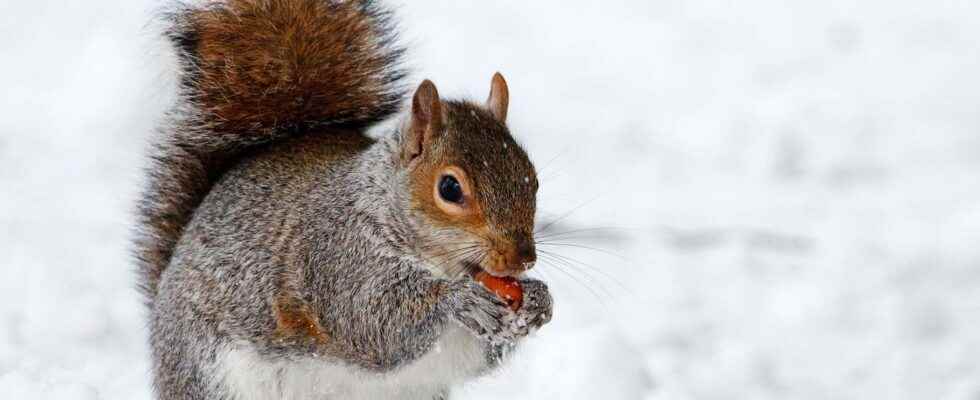While our pets can count on us to protect them from the cold, wildlife usually has to fend for itself. And each other’s strategies for surviving the lower temperatures are varied.
You will also be interested
[EN VIDÉO] Wild animals in the face of global warming Even very slight changes in climate can strongly affect the biodiversity of an area, or even lead to the disappearance of animals. This is why the CLS, specializing in the protection of wildlife, is committed to monitoring vulnerable species such as the king penguin or the elephant seal on a daily basis by satellite. Here is a video overview of the work carried out in the Arctic .
When the thermometer displays a temperature close to zero, we know that we will be cold when we leave our house. Wild animals do not have this kind of “technology”. Yet like us, vertebrates at least they can count on thermoreceptors scattered on the surface of their skin to indicate a drop in temperature and thus allow them to survive the cold.
Fur on the front line
Some then find themselves a little helpless. We can ask ourselves, for example, what becomes insects in winter. Concerning I’opossum, some parts of his body are naked. So when temperatures drop unusually, a victim offrostbite, it is not uncommon for him to lose a piece of his ears or tail. Because of course, to be protect from the cold, wild animals – a bit like our dogs and our cats – rely first on their fur, or their plumage. As we approachwinter, it tends to thicken. But when it fails, the struggle becomes more complicated.
The very classic migration
Among the most common strategies for surviving the cold, there is of course also migration. Even if it is rather a way of escaping the cold by going to spend the winter in a region with milder temperatures. This is what many birds do, ultimately more encouraged by the lack of food resources than by the installation of the cold itself.
The solution to torpor
Some animals benefit from a complex mechanism that allows them to regulate their internal temperature to keep it at a constant level throughout the year. However, at the cost of significant energy expenditure. This is why others prefer to opt for a body temperature lower. Those who choose thehibernation, for example, like the groundhog or the bat. During these phases of torpor, they live as if in slow motion.
Focus on heat exchange
Nature has endowed other animals with systems of exchange of heat that allow them to maintain the their body temperature despite harsh outdoor conditions. In the paws of squirrels, for example, arteries and veins are close. The blood which arrives from the heart by the arteries can therefore transmit its heat to the cold blood which goes up from the toes by the veins.
The secrets of fish to survive the cold
The Pisces have a chance: ice floats on water. So they can generally swim underneath, in a somewhat protected environment. And they haveenzymes which allow their physiological functions to be maintained at colder temperatures. In really harsh regions, the fish even use some sort of protein antifreeze that binds to ice crystals in the blood to prevent the blood from freezing completely.
Fat to warm up
In mammals as in birds, when the cold sets in, we can also observe the formation of a form of fat particular called the brown adipose tissue. This one is rich in mitochondria. These are able to releaseenergy effectively in the form of heat and thus, to survive the cold by warming the bodies.
The warmth of the group
The emperor penguins combine different strategies. In Antarctica, when temperatures reach -40 ° C, penguins first benefit from a certain insensitivity to the cold thanks to an extremely dense plumage whose structure acts as a windbreaker. The shape of their body seems, for its part, to have been modeled to minimize the exchange surface with theair cold. And a nice layer of fat and an artery / vein heat exchange system complete the picture. Before a last weapon intervenes: group thermoregulation. Several hundred individuals then huddle together to warm each other up.
Interested in what you just read?
.
fs12
